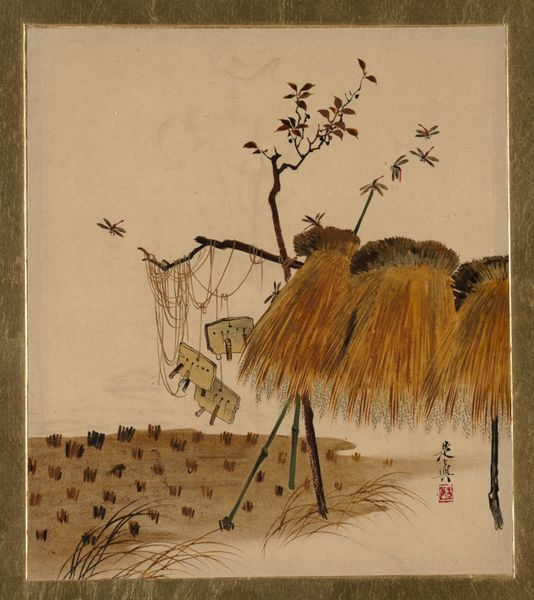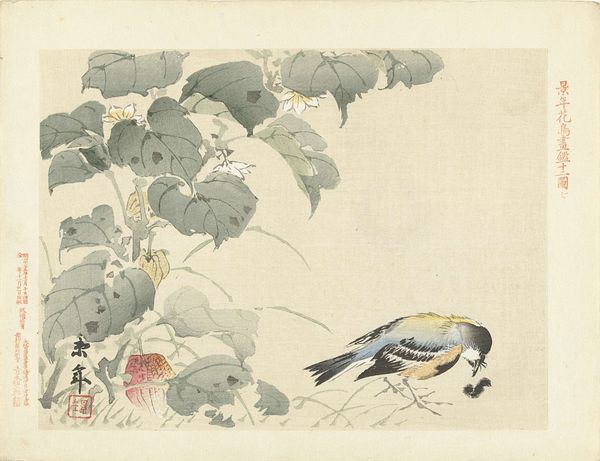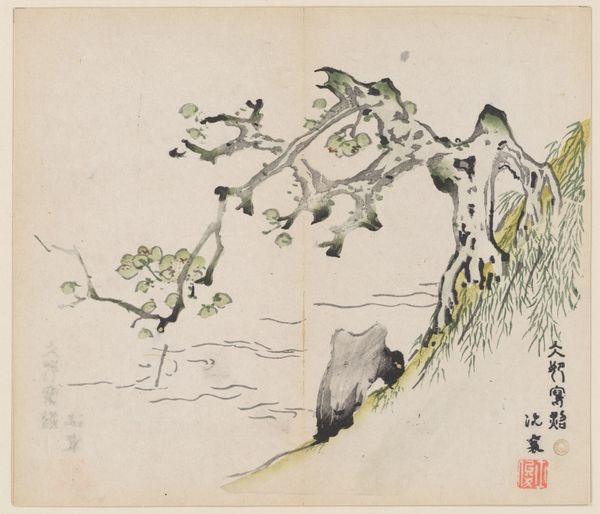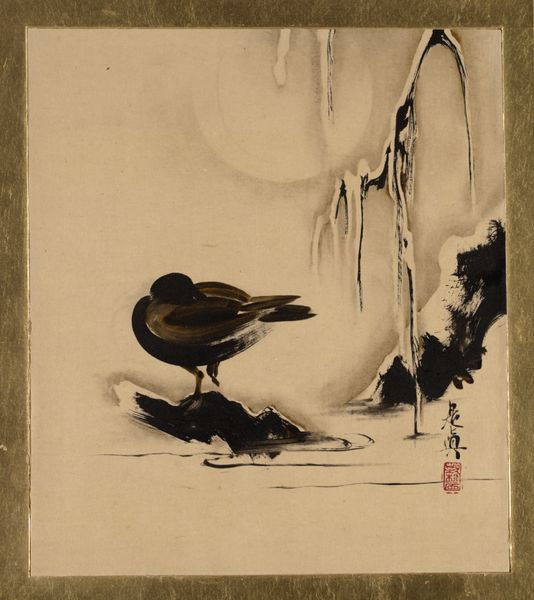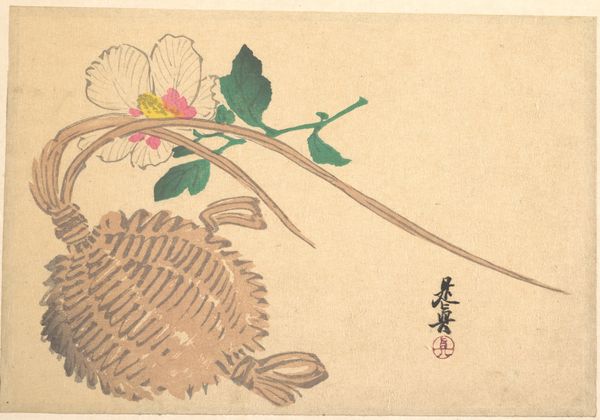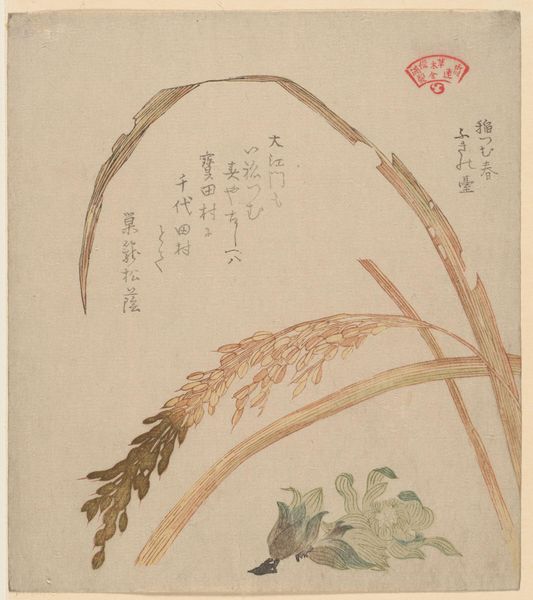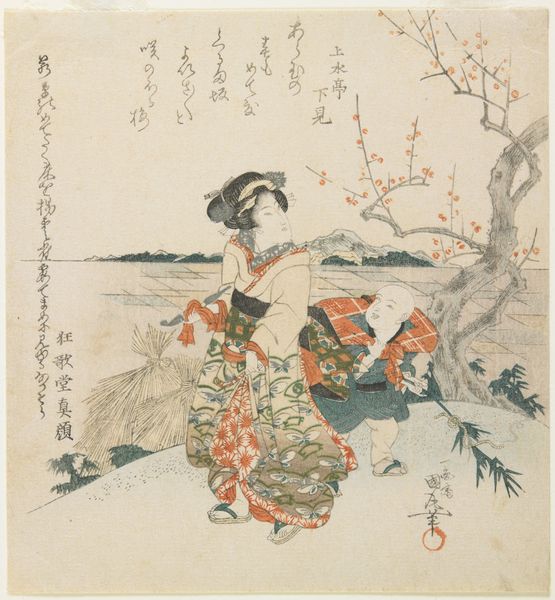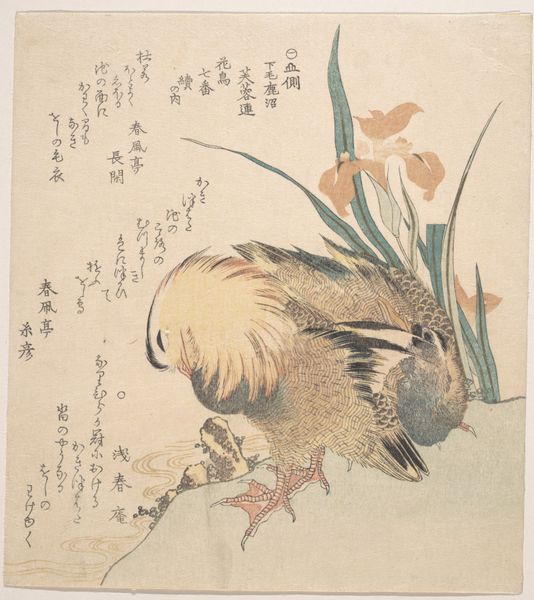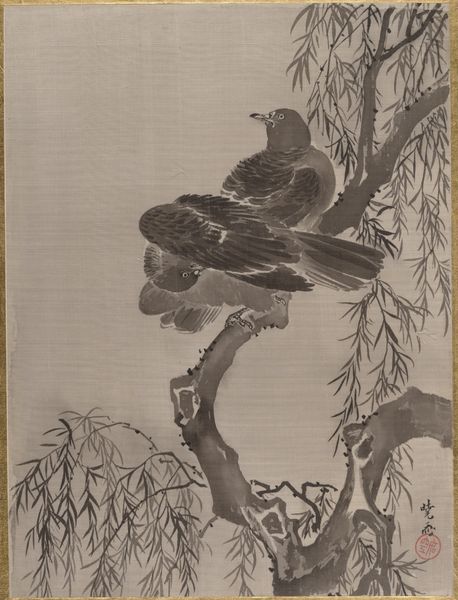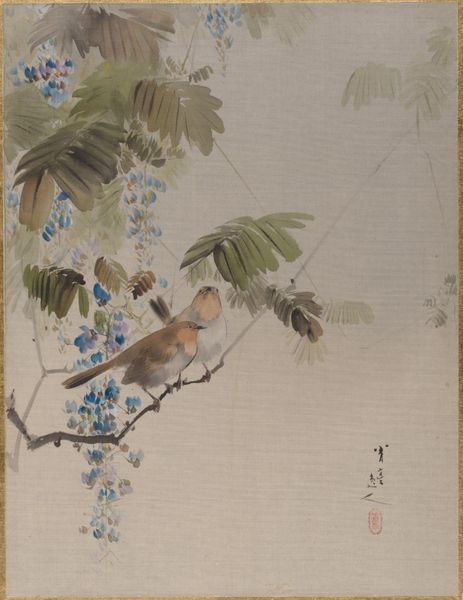
Lacquer Paintings of Various Subjects: Snow Shelter for a Tree with Sparrow 1882
0:00
0:00
Dimensions: 7 1/2 x 6 1/2 in. (19.1 x 16.5 cm)
Copyright: Public Domain
Curator: Looking at this watercolor and ink work, it evokes such quietness and solitude. It is titled "Lacquer Paintings of Various Subjects: Snow Shelter for a Tree with Sparrow", created by Shibata Zeshin in 1882. Editor: Yes, there's a delicate, almost mournful feel to it. The textures are incredible. You can almost feel the roughness of that thatched snow shelter and see the subtle ink washes on the paper, can’t you? I wonder what sort of labor went into that construction… Curator: Indeed. Shibata Zeshin was a master of lacquer techniques, even though this piece is executed with ink and watercolor. It showcases his extraordinary skills to emulate the texture and feel of different materials. He came from humble roots and always respected craft traditions. This work represents an interesting bridge between 'high art' and the meticulous labor involved in more functional art forms. Editor: Absolutely! Thinking about the social context of Ukiyo-e art, there was a booming demand from both domestic and international markets in the late 19th century, particularly during the Meiji era as Japan opened up. Pieces like this catered to Western fascination with the ‘Orient’, but artists were still working within established Japanese traditions. The composition places that snow shelter almost as a focal point, signifying, perhaps, nature carefully assisted to withstand the winter season. Curator: It's amazing how this one painting condenses such a broad story. From material production, traditional composition to catering international audiences— the intersection of art and society here is quite profound, right? Editor: Precisely. It's in these details – the careful craft of it, combined with its historic value that reveal how artworks operate in society, in markets. They reflect broader cultural interactions in Japan at the time, while the artist's choice of technique provides a deep context in the making and function of the work. Curator: Thinking about Shibata Zeshin and his choice to use these skills, even within traditional settings, allows the viewer to better understand a lot about a work that initially just appears as picturesque natural scene. Editor: Right! It shows a broader story of art being material and culturally valuable objects.
Comments
No comments
Be the first to comment and join the conversation on the ultimate creative platform.
